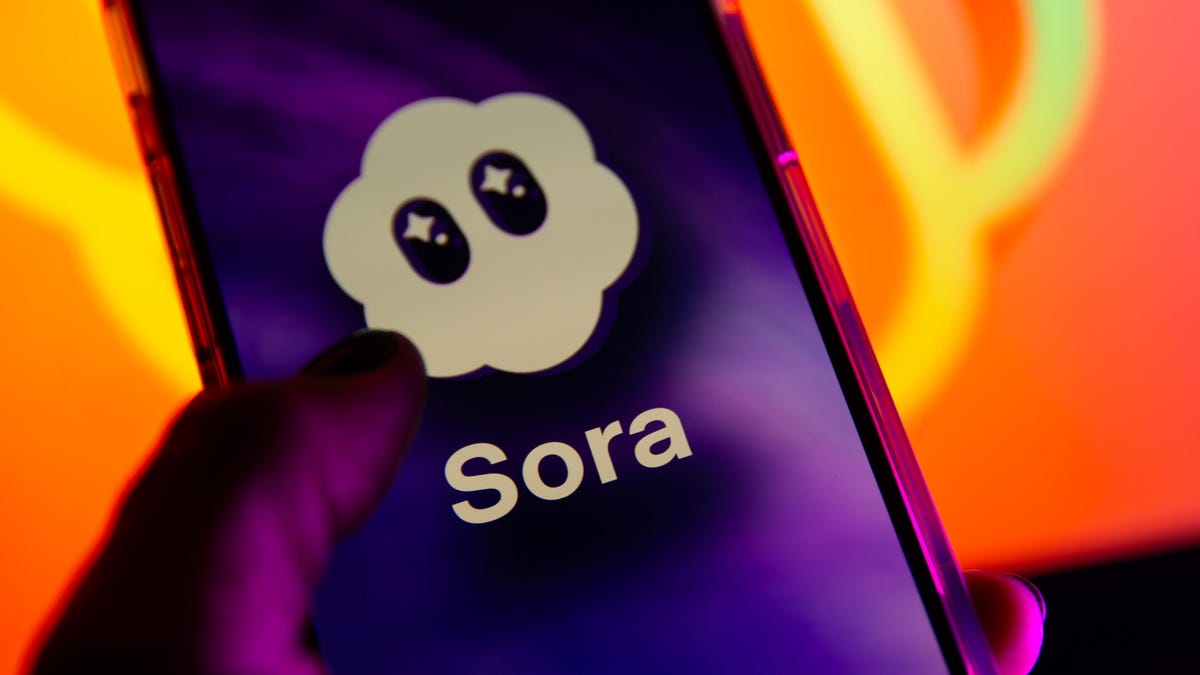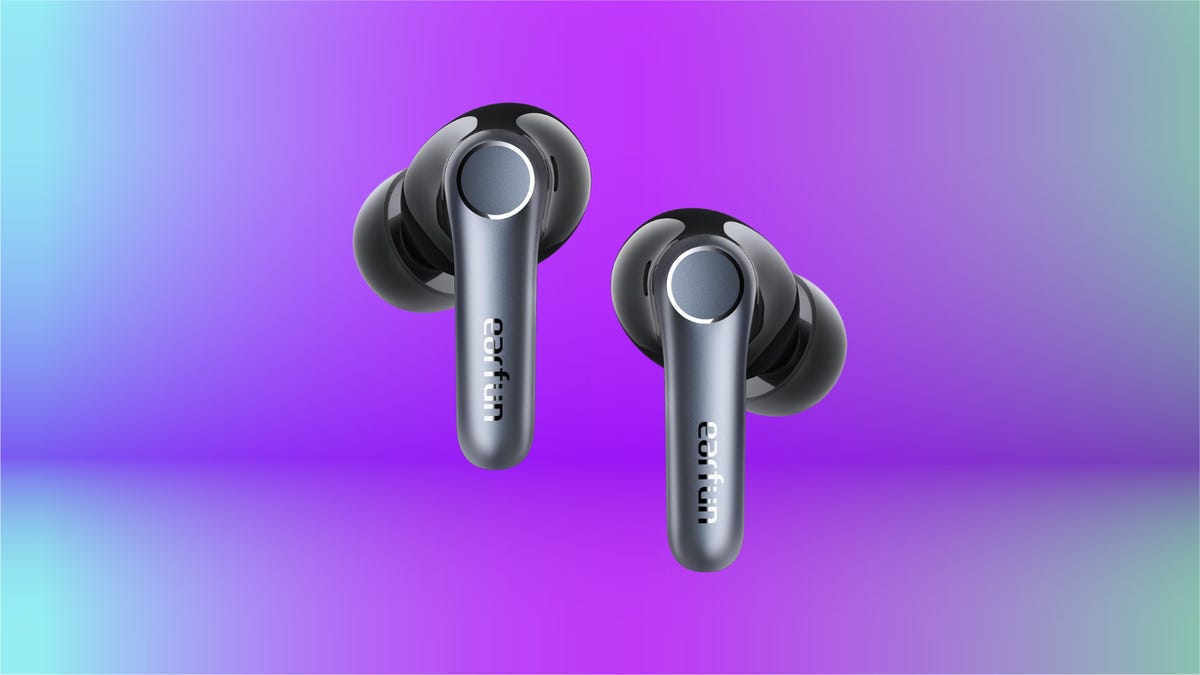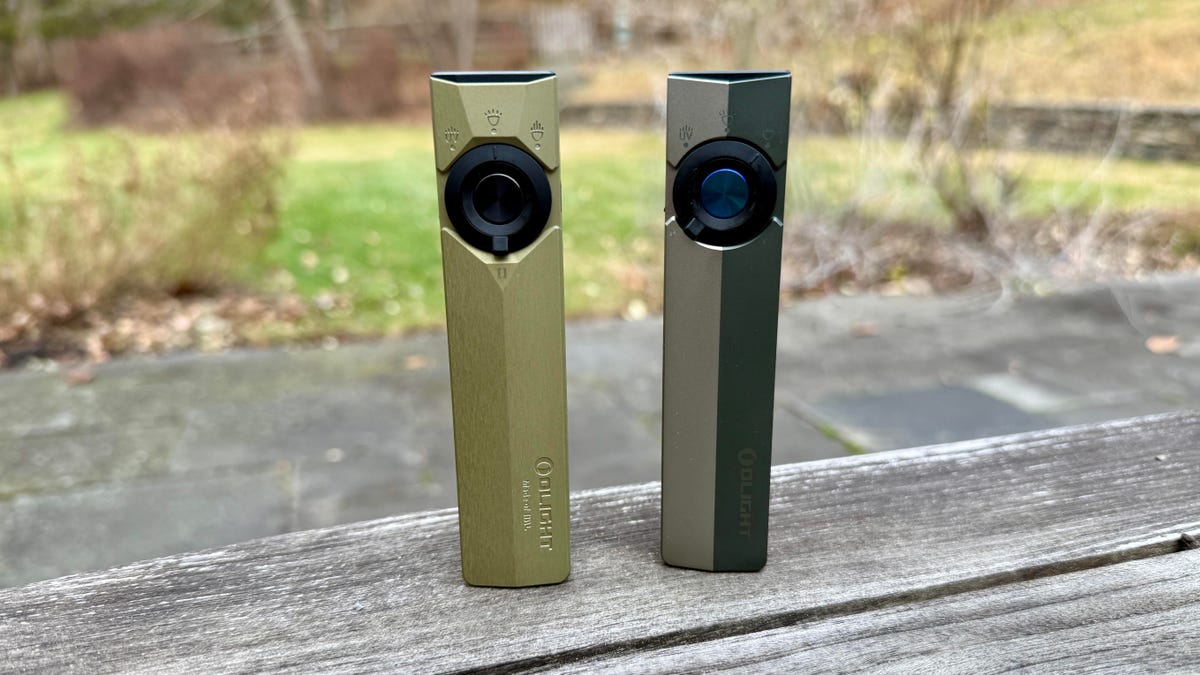Technologies
Google’s Pixel 7A: The Biggest Features I Want on the Rumored Phone
Commentary: Wireless charging, a screen with a higher refresh rate, and more Android updates, please.
Google’s Pixel 6A was my favorite Android phone under $500 last year, which means Google has a lot to live up to for its rumored Pixel 7A. That’s especially true as the company faces more competition in the budget phone space from Samsung, which just announced the $450 Galaxy A54 5G.
The $449 Pixel 6A is essentially a smaller, less expensive version of the Pixel 6, Google’s flagship phone from 2021. The Pixel 6A has the same Tensor processor and general design as the Pixel 6, but with a lower-resolution, 12-megapixel main camera and a few other compromises. But its relatively low cost, solid photography for the price and attractive design made it a top choice for Android fans shopping on a budget.
Google got a lot right with the Pixel 6A, but that doesn’t mean there isn’t room for improvement. For example, I sometimes felt the Pixel 6A’s screen was too dim, and its lack of wireless charging feels antiquated in 2023.
Google hasn’t mentioned any details about its upcoming product launch plans. But if the company maintains the same product launch strategy as last year, the Pixel 7A could appear as soon as this summer. Here’s what I’d like to see.
Same screen size, but smoother and brighter
The Pixel 6A’s 6.1-inch screen size is perfect for people who prefer smaller phones, so I’m hoping the Pixel 7A inherits this trait. It rounds out Google’s Pixel family nicely by ensuring there’s a small, medium and large option within the lineup.
However, I am hoping to see display upgrades in other areas. Google could improve the brightness on the Pixel 7A, for example, considering I was sometimes tempted to crank the brightness above 50% on the Pixel 6A, even when indoors. That’s one area where Samsung rarely has an issue, especially in the Galaxy S22 and S23 lineups.
I’d also like to see a higher refresh rate on the Pixel 7A. Since Google’s A-series phones aren’t meant to have all the flourishes you’d find on a flagship phone, a standard refresh rate may seem reasonable for the Pixel 7A. The problem, though, is that high refresh rates are no longer reserved just for premium devices. Budget phones like last year’s Galaxy A53 5G and even Motorola’s Moto G 5G have refresh rates that are higher than the standard 60Hz, resulting in smoother scrolling. That makes the Pixel 6A feel a little behind, though it excels over these competing devices in other ways, like the camera.
Luckily, Google might address this with the Pixel 7A, if a leak from developer Kuba Wojciechowski turns out to be true. Wojciechowski claims to have found details in the Android codebase indicating that the Pixel 7A could have a higher, 90Hz refresh rate, which would match the Pixel 7’s.
Wireless charging
Another feature missing from the Pixel 6A is wireless charging. The ability to charge your phone on a wireless charging pad instead of by plugging it in may not seem like a deal breaker for most people. But similar to high refresh rates, wireless charging doesn’t feel like it should be a premium feature in 2023, especially since it’s been common on most phones for the last five years. That said, many competing phones in this price range don’t support wireless charging either, aside from the $429 iPhone SE.
Thankfully, the Pixel 7A may indeed gain wireless charging, if Wojciechowski‘s findings are accurate.
More guaranteed Android updates
Google’s Pixel phones are among the first to get new Android software updates. Google, however, doesn’t offer Android version updates for as long as Samsung does. Samsung provides four generations of Android version updates, while Google offers only three. Considering Google is the purveyor of Android, and that Pixel phones are expected to provide the ideal Android experience, I’m hoping Google considers extending support in the future. And not just for the Pixel 7A, but for all upcoming Pixel phones.
Face Unlock
The Pixel 7 and 7 Pro support the ability to unlock your phone with your face, unlike the Pixel 6. Since that functionality primarily relies on the Pixel 7’s front-facing camera, unlike Apple’s Face ID, which creates a depth map of your face, I don’t see any reason why Google couldn’t easily bring this feature to the Pixel 7A. Samsung’s Galaxy A53 5G, which was in the same price range as the Pixel 6A at launch, also supports facial recognition.
If the Pixel 7A does gain the Pixel 7’s Face Unlock, just remember that Google cautions it isn’t as secure as using the fingerprint reader or a PIN. Because of this, it’s meant for unlocking your phone more conveniently, rather than authenticating purchases.
Photo Unblur
One of the biggest ways Google differentiates its Pixel phones from other Android devices is by providing software and camera features you can’t get elsewhere. One of my favorite additions to the Pixel 7 is a feature called Photo Unblur, which sharpens old photos that may’ve been taken out of focus. If the Pixel 7A runs on the same Tensor G2 processor as the Pixel 7 and 7 Pro, it’ll likely support Photo Unblur, too. And I hope it does, because during my review, I was seriously impressed with how well it sharpened a photo of me from 10 years ago.
Google has an opportunity to make its next A-series Pixel phone even more compelling by adding features that should be standard in 2023 — namely wireless charging and a screen with a higher refresh rate. Google will naturally need to make some compromises with the Pixel 7A to keep its price competitive and maintain some separation from the Pixel 7. But even with the features mentioned above, there’s still plenty that would distinguish the Pixel 7 from its cheaper sibling, like a larger screen, a higher resolution camera, a larger storage option and more RAM.
We’re hoping to find out more about Google’s upcoming Pixel plans at its Google I/O developer conference in May.
Technologies
Sora and Google’s Nano Banana Pro Are Slammed, and Scale Back Free Videos and Images
OpenAI and Google are reducing the number of image or video requests you can make on their latest media-generation platforms.

Maybe it’s because of the holiday weekend.
OpenAI’s video generator Sora and Google’s image generator nano banana pro are placing new limits on how many videos (in the case of Sora) and AI images (in the case of nano banana pro) you can make per day.
With more people using their Thanksgiving weekend idle time to, say, make AI videos of cats as angry service industry cashiers, it’s likely these services are hitting their limits.
Bill Peebles, OpenAI’s head of Sora, posted on X, «our gpus are melting, and we want to let as many people access sora as possible!» GPUs are the graphics processing units used by AI services for the complex computations they need to perform.
Peebles wrote that Sora will limit free video generation to six videos per day. ChatGPT Plus and Pro accounts won’t see any changes.
«And everybody can purchase additional gens as needed,» he wrote.
Don’t miss any of our unbiased tech content and lab-based reviews. Add CNET as a preferred Google source.
Gemini limits
As for Google’s image generator, a Gemini support page says that those without a Google AI plan are now limited to two images generated and edited per day with nano banana pro. The previous limit was three, according to 9to5Google, which also spotted new usage limits on Gemini 3 Pro that are variable. The same support page says free access to Gemini 3 Pro Thinking includes «Basic access — daily limits may change frequently.»
The limit for nano banana (the previous 2.5 non-pro version) is 100 free images per day.
A representative for Google did not immediately respond to a request for comment.
(Disclosure: Ziff Davis, CNET’s parent company, in April filed a lawsuit against OpenAI, alleging it infringed Ziff Davis copyrights in training and operating its AI systems.)
Technologies
If You Don’t Want to Pay AirPod Prices, I Found Great Noise Canceling Earbuds That Are Only $53 for Black Friday
You don’t need to spend a fortune to get a great pair of earbuds.

Black Friday deal alert: If you’re looking for a new pair of noise-canceling earbuds, there are some good deals on Apple AirPods right now, but you might be able to spend half as much to get similar performance. I’ve found that the Air Pro 4 earbuds from Earfun are legitimate contenders to the AirPods, at a much lower price. Right now at Amazon for Black Friday, you can get the Air Pro 4s for a steal — they’re 34% off, which drops their price down to $53.
In short, they’re great, and the black ones are currently available on Amazon for $53, near the lowest price we’ve ever seen them sell for. The other colors are also on sale; the glossy white and royal blue are both $68.
Hey, did you know? CNET Deals texts are free, easy and save you money.
HEADPHONE DEALS OF THE WEEK
-
$248 (save $152)
-
$170 (save $181)
-
$199 (save $150)
How these earbuds silence the noise around you
I prefer in-ear headphones because they offer active, electronic and passive noise cancellation. Passive noise cancellation basically consists of plugging your ears with the rubbery tips included with the earbuds.
The Earfuns fit well for me when I use the second-largest of the five swappable ear tip sizes, and they stay sealed and comfortable for hours. Sometimes I have to reseal one after I yawn or something, but that’s the case with other in-ear headphones, too.
For reading, I prefer Earfun’s «Strong ANC» noise-canceling mode, which makes a big difference when blocking out the noise around you, but there are a bunch of other noise-cancellation options. The Ambient Sound function is good for when I want to pay attention to my surroundings.
Overall, I found the app easier to use than Sony’s and just as capable. The main difference is that Sony’s app has a variable slider for ambient sound.
The Earfun app also includes a white noise section in the app. Normally, I prefer Spotify for white noise (and I download my favorite playlists for offline listening) but this feature is useful for people who don’t have another music service. It includes birdsong, waves and rainfall, all of which are short clips that repeat automatically.
Why I chose these earbuds over AirPods
These headphones have every other feature I’d expect, including the ability to connect to two devices simultaneously and programmable touch-sensitive controls on the buds. Plus, battery life has been more than ample for me, even after a marathon reading session.
There’s also a finder function if you misplace either earbud (unlike Apple FindMy, however, they have to be connected and in Bluetooth range). For actual music and voice calling quality, they sound fine, albeit not as good as my big Sonys.
I have an iPhone and briefly thought about buying Apple AirPods, but I didn’t want to spend the money. The AirPods 4 with noise cancellation cost $115 more than these Earfuns and have an open-ear design, so they rely entirely on the electronic (not passive) method. The AirPods Pro 2 are in-ear and superb, but I didn’t want to spend $250 on a pair of secondary headphones.
Yes, I could probably save some money on an even less expensive pair of in-ear noise-cancelling headphones, but I’m not sure I’d be as happy with their fit, long-term comfort, battery life and noise-cancellation performance. The Earfun Pro 4 buds help me relax and concentrate on my book, and for me that’s priceless.
For more headphone savings, check out our roundup of all the best deals on headphones, or find bargains of all kinds in our roundup of the best Amazon Prime Day deals going on now.
Join Our Daily Deals Text Group!
Get hand-picked deals from CNET shopping experts straight to your phone.
By signing up, you confirm you are 16+ and agree to receive recurring marketing messages at the phone number provided. Consent is not a condition of purchase. Reply STOP to unsubscribe. Msg & data rates may apply. View our Privacy Policy and Terms of Use.
Technologies
I Have a Flashlight Fetish and My Favorite New Olight Is 20% Off for Black Friday
Olight’s sleek new pocket flashlight, the ArkPro, is normally $100. But it’s down to $80 for Black Friday and Cyber Monday.

Truth be told be told, I have a thing for flashlights. Not a bad thing, just a certain appreciation for a well-designed torch, as the Brits might say.
Bright flashlights are good, naturally, but a small, sleekly designed rechargeable everyday carry flashlight that puts out a decent amount of light is high on my list of flashlight favorites, and the new Olight ArkPro and its slightly brighter sibling, the ArkPro Ultra, fit the bill. They’re both on sale for Black Friday and Cyber Monday for 20% off. The ArkPro is down to $80 ($100 list) while the ArkPro Ultra’s price has dipped to $104 ($130 list).
The flashlights are upgraded versions of Olight’s Arkfeld Pro ($70) and Arkfeld Ultra ($84), with higher brightness ratings. Both new models have similar flat, IPX7 waterproof designs with sturdy metal bodies and a magnetic base that allows you to attach the flashlight to anything metal. There’s also an integrated clip-on mount, and they come in cool white and neutral white color temperature versions.
You get three lighting modes: a 1,500-lumen floodlight mode (1,700 lumens for the ArkPro Ultra), an 800-lumen, 205-meter reach spotlight mode (it’s the same for the Ultra) and a UV light mode. You can also activate a green beam laser pointer.
The flashlights come with a wireless charger that magnetically attaches to the base, but you can also charge them via USB-C, which I found more convenient.
I mainly tested the flashlights while walking my dog at night in a pretty remote rural area in New York. The floodlight mode works better for dog walking, but I’d sometimes switch to spotlight mode when I wanted to gauge what was further ahead of us or check whether anything was lurking in the trees or bushes.
These smaller EDC flashlights are well-suited to a variety of activities, including camping and anything you’re doing where you’d like to have a flashlight handy that you can easily carry around in a pocket. You can find similar flat flashlight designs from other brands on Amazon — some of them for significantly less money. However, Olight is considered a premium EDC flashlight brand, though some flashlight enthusiasts are less enthusiastic about the brand for a few reasons. That said, I’m just fine recommending these new ArkPro models when they’re discounted like this. And they do make for nice gifts this time of year.
Join Our Daily Deals Text Group!
Get hand-picked deals from CNET shopping experts straight to your phone.
By signing up, you confirm you are 16+ and agree to receive recurring marketing messages at the phone number provided. Consent is not a condition of purchase. Reply STOP to unsubscribe. Msg & data rates may apply. View our Privacy Policy and Terms of Use.
-

 Technologies3 года ago
Technologies3 года agoTech Companies Need to Be Held Accountable for Security, Experts Say
-

 Technologies3 года ago
Technologies3 года agoBest Handheld Game Console in 2023
-

 Technologies3 года ago
Technologies3 года agoTighten Up Your VR Game With the Best Head Straps for Quest 2
-

 Technologies4 года ago
Technologies4 года agoBlack Friday 2021: The best deals on TVs, headphones, kitchenware, and more
-

 Technologies4 года ago
Technologies4 года agoVerum, Wickr and Threema: next generation secured messengers
-

 Technologies4 года ago
Technologies4 года agoGoogle to require vaccinations as Silicon Valley rethinks return-to-office policies
-

 Technologies4 года ago
Technologies4 года agoOlivia Harlan Dekker for Verum Messenger
-

 Technologies4 года ago
Technologies4 года agoiPhone 13 event: How to watch Apple’s big announcement tomorrow
